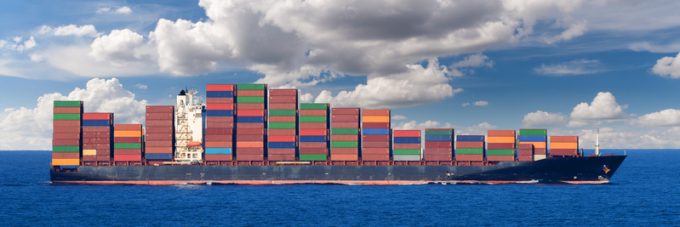Rates still slipping as peak season recedes and port strike threat subsides
Freight rates are continuing their downward correction following the premature peak season and front-loading of ...
GM: RAISING THE ROOF GGM: IN FULL THROTTLE GZIM: MAERSK BOOST KNIN: READ-ACROSSMAERSK: NOT ENOUGHMAERSK: GUIDANCE UPGRADEZIM: ROLLERCOASTERCAT: HEAVY DUTYMAERSK: CATCHING UP PG: DESTOCKING PATTERNSPG: HEALTH CHECKWTC: THE FALLGXO: DEFENSIVE FWRD: RALLYING ON TAKEOVER TALKODFL: STEADY YIELDVW: NEW MODEL NEEDEDWTC: TAKING PROFIT
GM: RAISING THE ROOF GGM: IN FULL THROTTLE GZIM: MAERSK BOOST KNIN: READ-ACROSSMAERSK: NOT ENOUGHMAERSK: GUIDANCE UPGRADEZIM: ROLLERCOASTERCAT: HEAVY DUTYMAERSK: CATCHING UP PG: DESTOCKING PATTERNSPG: HEALTH CHECKWTC: THE FALLGXO: DEFENSIVE FWRD: RALLYING ON TAKEOVER TALKODFL: STEADY YIELDVW: NEW MODEL NEEDEDWTC: TAKING PROFIT

Ocean carriers with the greatest exposure to the embattled east – west trades recorded the steepest fall in their average freight rates in the first quarter and are struggling to breakeven in the soft market environment.
According to an Alphaliner analysis, Hapag-Lloyd tops the table so far, of carriers that publish their results in detail, with an average rate for the 2.84m teu that it transported in Q1 of $1,999 per teu.
This represents a 27.9% decline in the German carrier’s average rate, compared to the first quarter of 2022, from 5% less volume.
Japanese carrier ONE is second in the rankings with an average rate of $1,788 per teu, 39.9% lower than last year and from 8.5% fewer carryings.
Maersk is currently fourth with an average rate per teu of $1,436, a decline of 36.9% on Q1 2022 from liftings that were down by 9.3%.
At the bottom of the deep sea liner pile is Zim, which reported a $58m Q1 net loss on Monday and saw its average rate tank by 63.9%, compared to last year, to $1,390 per teu from a 10.5% reduction in its carryings.
In contrast the Israeli carrier achieved a profit of $1.7bn in Q1 last year from an average rate per teu of $3,848, which was one of the highest in the industry, as it benefited from premium rates on its transpacific services.
“Zim’s first quarter results reflected the significant decline in freight rates and weak demand, particularly in the transpacific,” said Zim’s president and CEO Eli Glickman.
Indeed, the transpacific has seen the steepest decline in spot rates of the major tradelanes with spot rates from China to the US west coast tumbling from the demand and congestion boosted highs of $20,000 per 40 ft a year ago, to less than $1,500 per 40 ft currently.
Moreover, the sub-economic spot rates on the route have eventually dragged down contract rates to just above breakeven levels for new contracts being signed.
“Larger carriers clearly benefitted from significant contract cover, and also a greater diversity of trades, with Hapag-Lloyd for example operating 58% of its fleet outside the east – west or intra-Asia trades,” said Alphaliner.
Conversely the consultant noted that Zim has the highest exposure of all the major carriers to the transpacific with 43% of its current capacity of 584,000 teu deployed on the route.
Moreover, the carrier has a huge orderbook of 10 15,000 teu and 18 7,700 teu LNG-powered vessels which are now starting to be delivered via long-term charters with non-vessel operator Seaspan.
Nevertheless, Zim intends to balance this capacity injection with a similar number of its fleet with expiring charters this year that it will return to owners, albeit that the ships to be off hired are smaller.
According to Alphaliner data, so far carriers have reported operating profits of $6.9bn for trading in the first quarter, versus $35.9bn the year before, however Q1 is expected to be the financial highlight of the year.
“More losses appear inevitable, with even large carriers such as Maersk and Hapag-Lloyd maintaining full-year forecasts which entertain the possibility of deficits at a quarterly level,” said Alphaliner.
Listen to Peter Sand, chief analyst at Xeneta, talk about how container lines will dip into their box of tricks in 2023.
Comment on this article